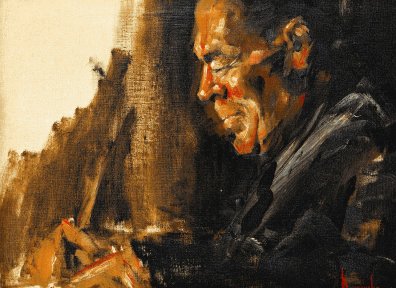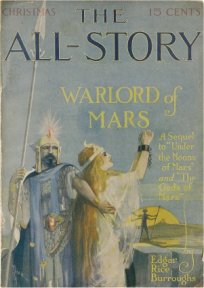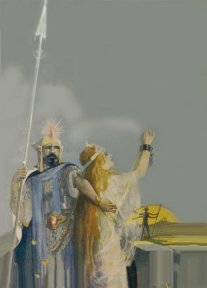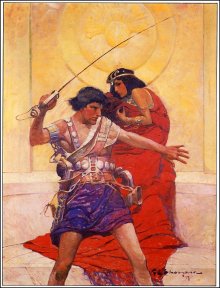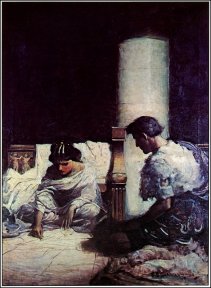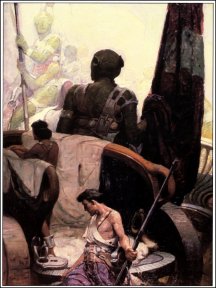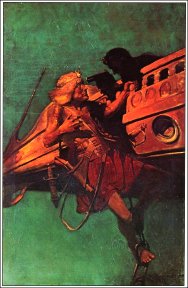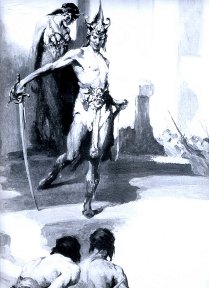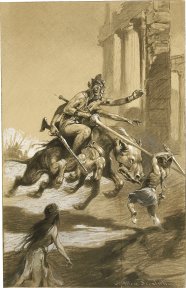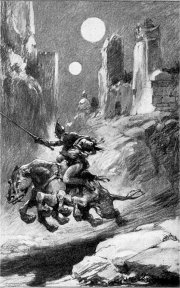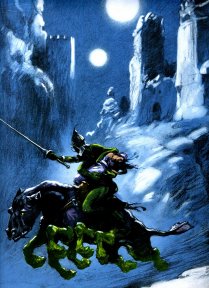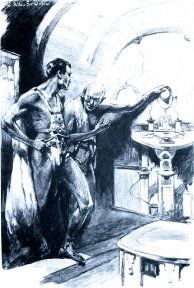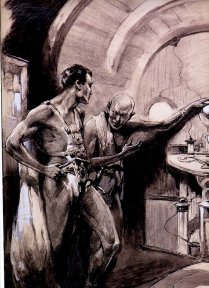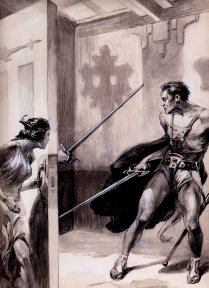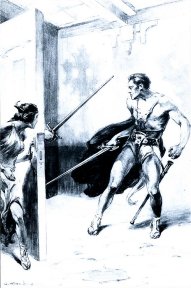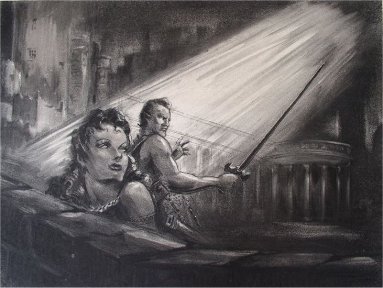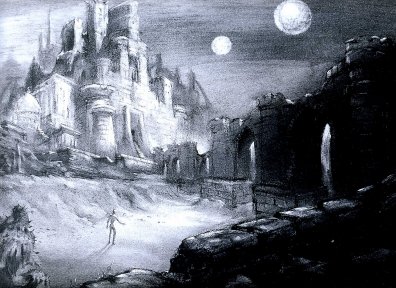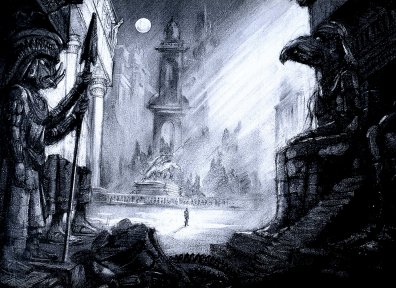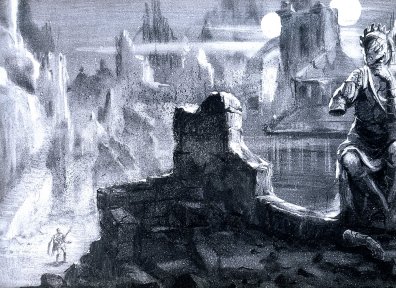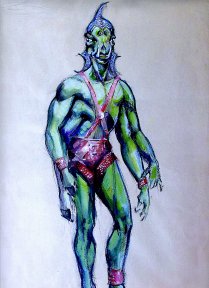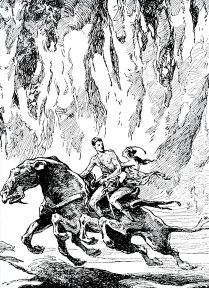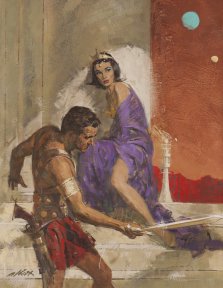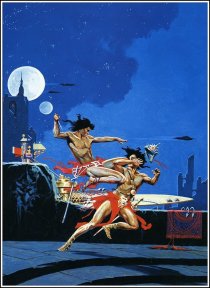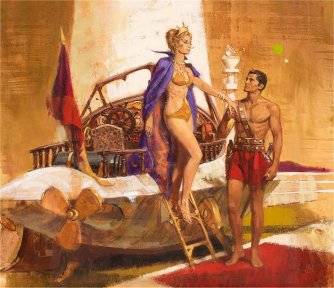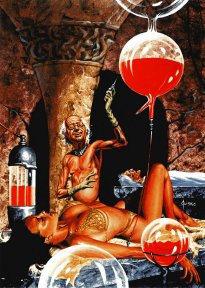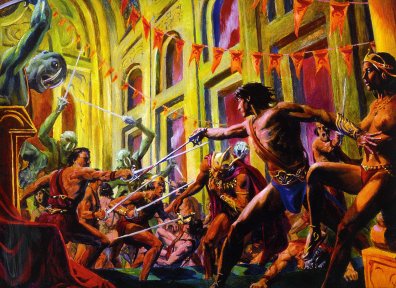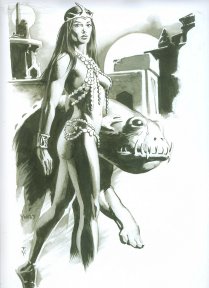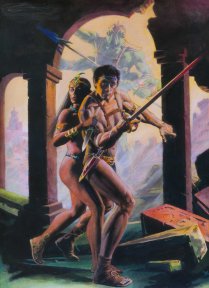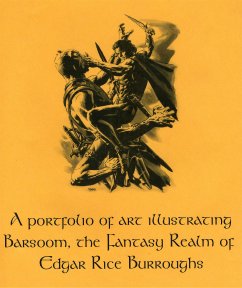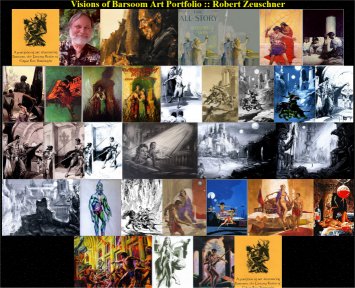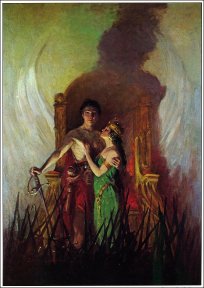
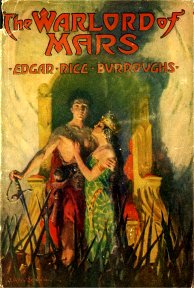
|

Plate 7
 J. Allen St. John (1872-1957) was one of Burroughs’ favorite illustrators.
His first ERB art was his pen-and-ink illustrations for the 1915 The
Return of Tarzan, and over the decades St. John painted and drew many
classic images of John Carter, the incomparable Dejah Thoris, the princess
of Mars, and their various adventures. The first illustration set on Barsoom
by St. John was for the dust jacket of The Warlord of Mars (September
1919). The same image in monochrome serves as the frontispiece. St. John
has chosen to illustrate the final page of the book, the triumphant finish
to the three volume trilogy which began with A Princess of Mars.
At the very end of the book the leaders and rulers of the separate nations,
the red, the green, the yellow, and the black, have come to the capital
city of Helium, surprised John Carter by summoning him to a justice tribunal,
and Tars Tarkas, the ruler of the Thark nation asserts:
J. Allen St. John (1872-1957) was one of Burroughs’ favorite illustrators.
His first ERB art was his pen-and-ink illustrations for the 1915 The
Return of Tarzan, and over the decades St. John painted and drew many
classic images of John Carter, the incomparable Dejah Thoris, the princess
of Mars, and their various adventures. The first illustration set on Barsoom
by St. John was for the dust jacket of The Warlord of Mars (September
1919). The same image in monochrome serves as the frontispiece. St. John
has chosen to illustrate the final page of the book, the triumphant finish
to the three volume trilogy which began with A Princess of Mars.
At the very end of the book the leaders and rulers of the separate nations,
the red, the green, the yellow, and the black, have come to the capital
city of Helium, surprised John Carter by summoning him to a justice tribunal,
and Tars Tarkas, the ruler of the Thark nation asserts:
“Judges,” he said, “there can be but one verdict. No longer may John
Carter be Prince of Helium” – he paused – “but instead let him be
Jeddak of Jeddaks, Warlord of Barsoom!”
... Presently fifty of the mightiest nobles of the greatest courts
of Mars marched down the broad Aisle of Hope bearing a splendid car upon
their shoulders, and as the people saw who sat within, the cheers that
had rung out for me paled into insignificance besides those which thundered
through the vast edifice now, for she whom the nobles carried was Dejah
Thoris, beloved Princess of Helium.
Straight to the Throne of Righteousness they bore her, and there Tardos
Mors assisted her from the car, leading her forward to my side.
“Let a world’s most beautiful woman share the honor of her husband,”
he said. Before them all I drew my wife close to me and kissed her upon
the lips.
Originally St. John painted this image as the color dust jacket cover,
with St. John’s own distinctive lettering painted onto the canvas. If you
examine the print carefully, you can see the remnants of the original lettering
which St. John has apparently painted over so that the image could be used
for a monochrome frontispiece, but was not quite able to get rid of all
traces of it. |

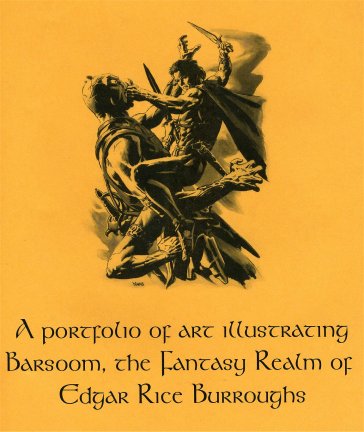
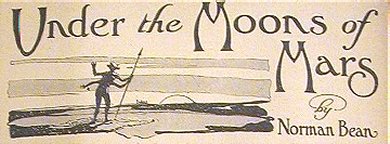 The first
tale of Barsoom was in the February 1912 issue of
All-Story magazine,
entitled “Under the Moons of Mars.” It was published under the pseudonym
“Norman Bean” (but Burroughs had intended it to read “Normal Bean”). The
only illustration found in the six issues of the serial was a small title
decoration by artist F. W. Small portraying a lone green six-limbed
warrior.
The first
tale of Barsoom was in the February 1912 issue of
All-Story magazine,
entitled “Under the Moons of Mars.” It was published under the pseudonym
“Norman Bean” (but Burroughs had intended it to read “Normal Bean”). The
only illustration found in the six issues of the serial was a small title
decoration by artist F. W. Small portraying a lone green six-limbed
warrior.
